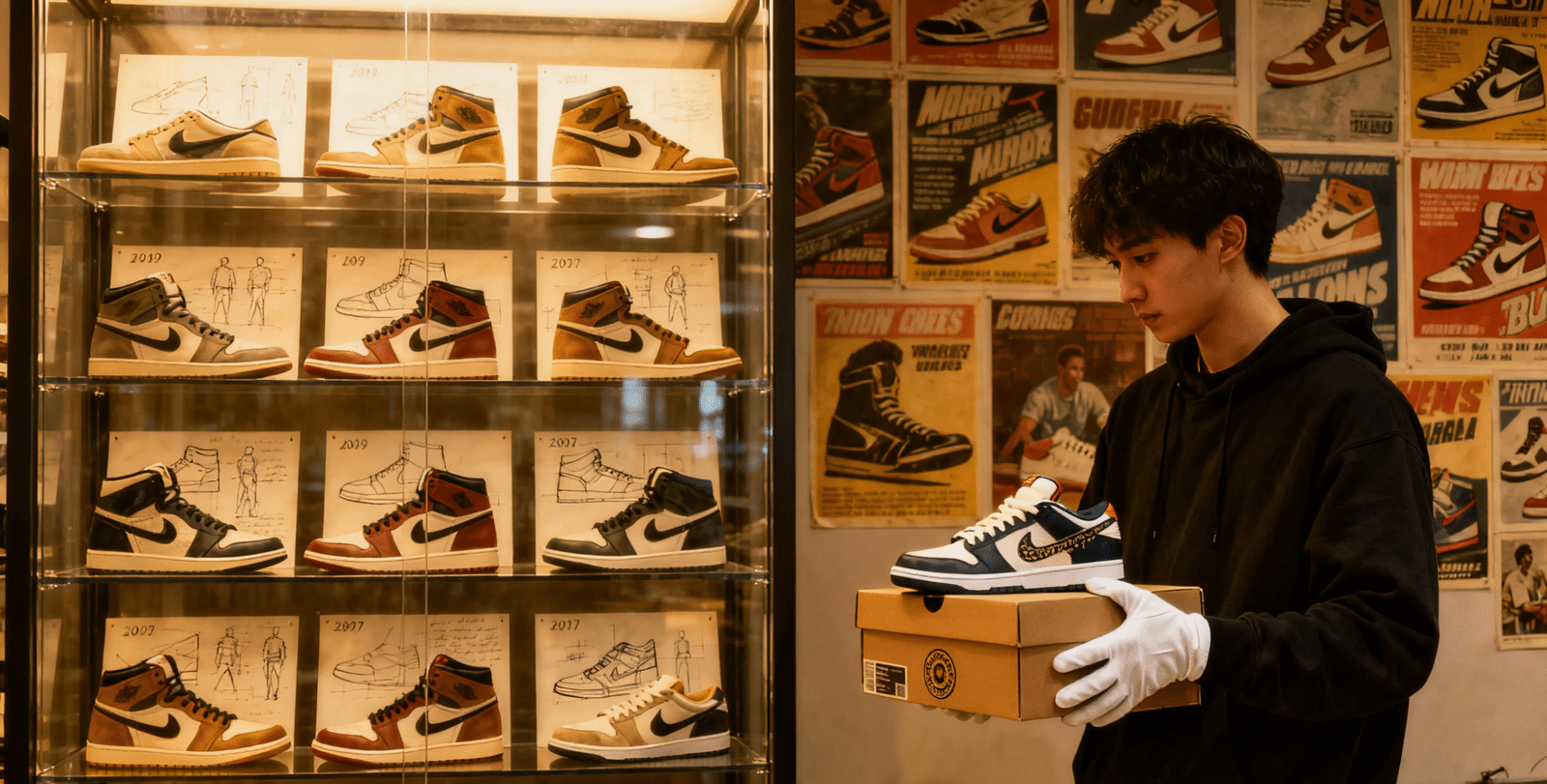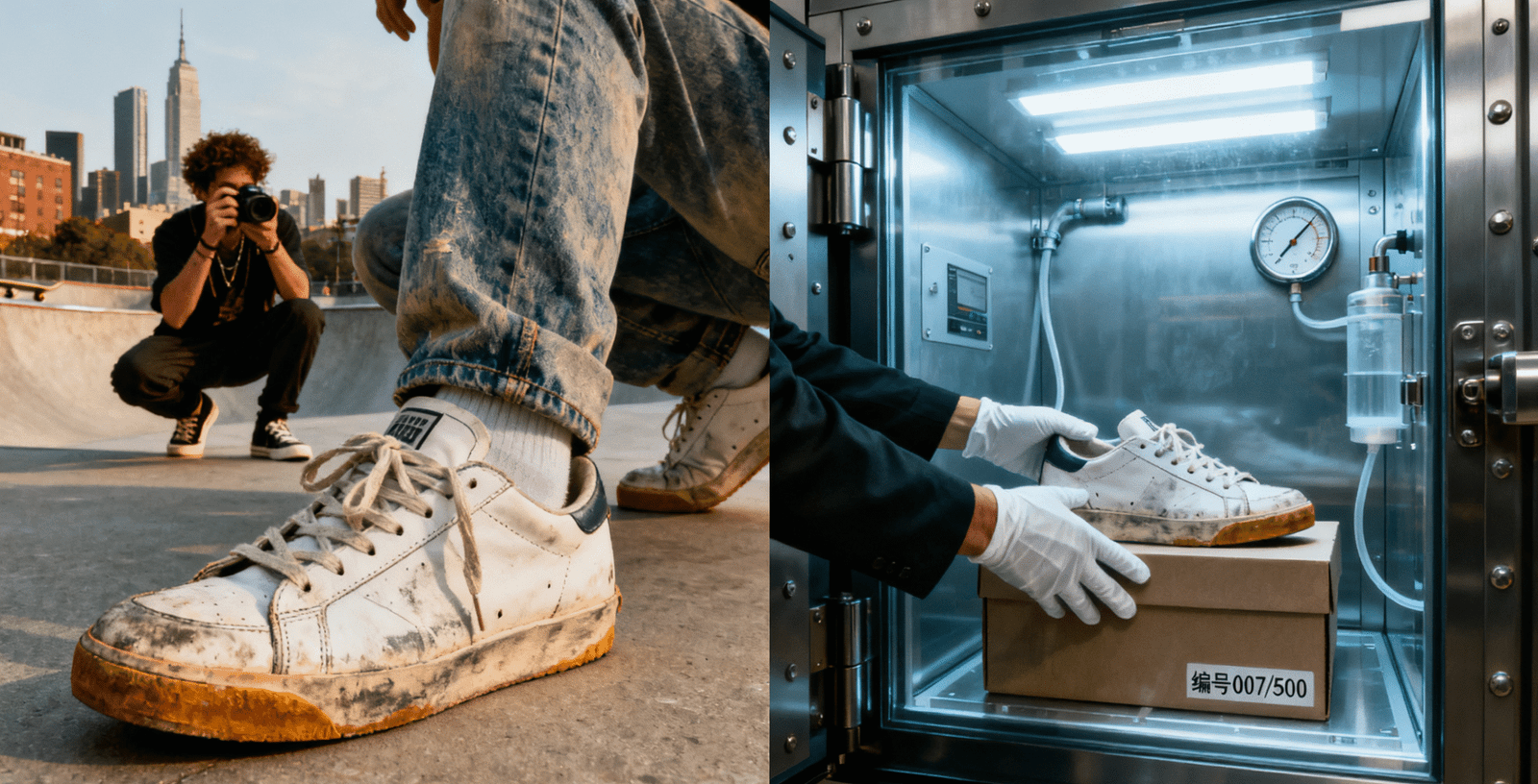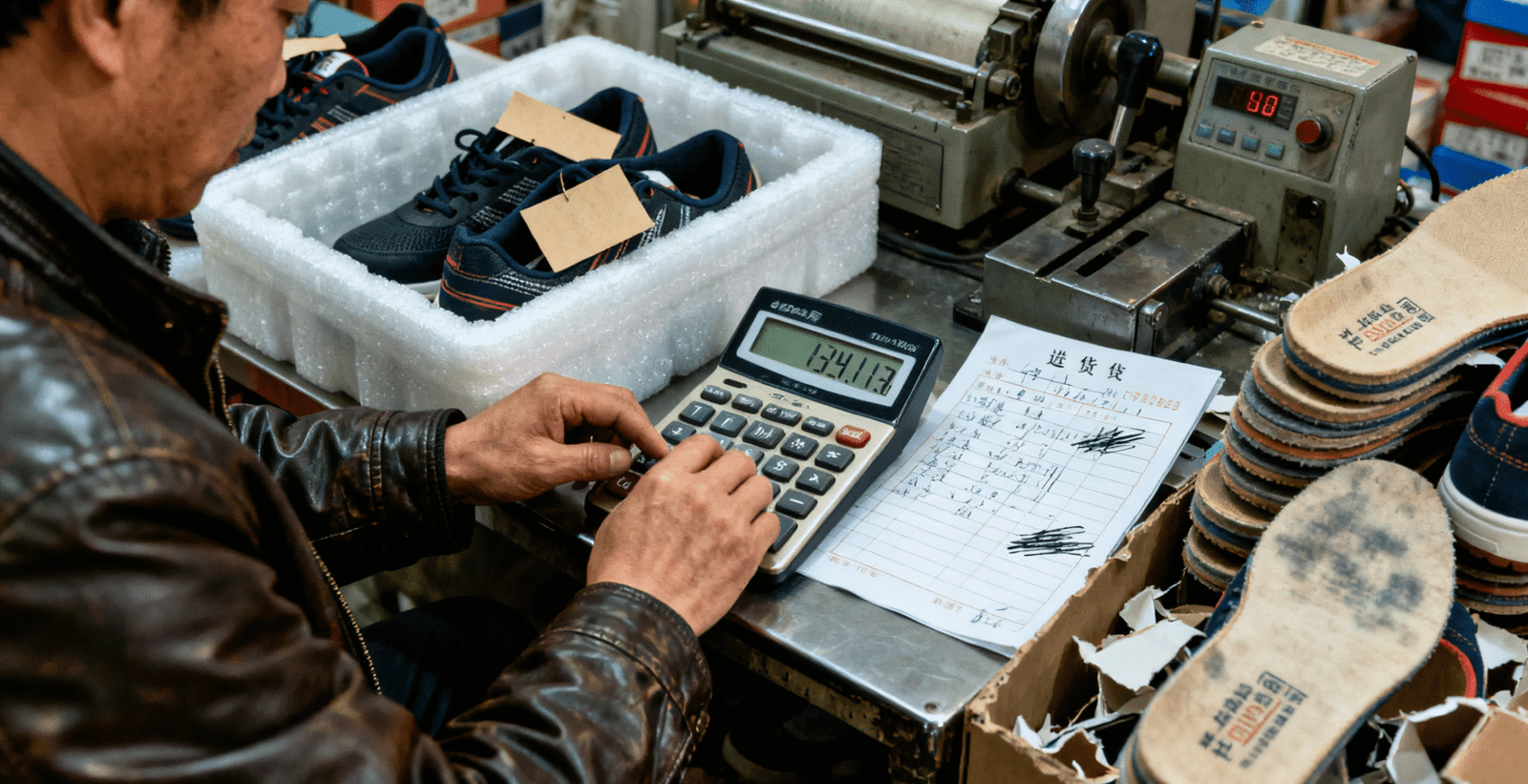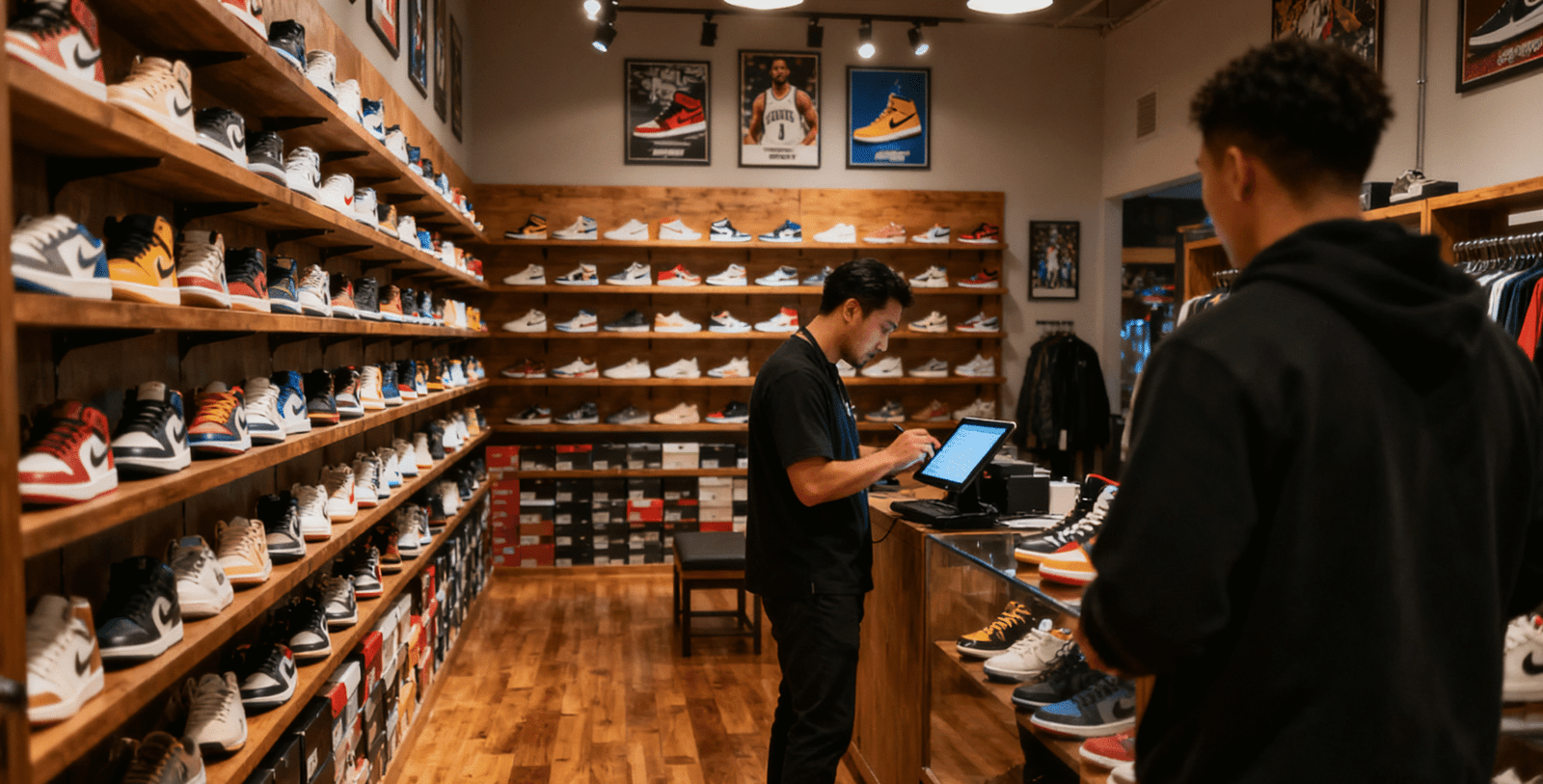Problem: You see headlines about sneakers selling for insane prices, or people camping out for days for a new release. Agitation: It's natural to wonder, who exactly is buying these "collectible sneakers," and what drives this seemingly insatiable demand, whether for fashion, investment, or something else entirely? Solution: Let's dive into the fascinating world of sneaker collecting to uncover the motivations behind this booming market.
People buy collectible sneakers for a multifaceted blend of reasons, encompassing genuine passion for sneaker culture and design, the desire for unique fashion expression, and increasingly, as a lucrative alternative investment asset. This dynamic mix of aesthetics, aspiration, and financial potential fuels the high demand and secondary market for limited-edition releases.
 In my 25 years in the shoe industry, I've witnessed countless trends come and go, but the rise of collectible sneakers is in a league of its own. It's transformed footwear from mere utility to high art, coveted fashion, and even a financial commodity. It's a world where passion, prestige, and profit intersect.
In my 25 years in the shoe industry, I've witnessed countless trends come and go, but the rise of collectible sneakers is in a league of its own. It's transformed footwear from mere utility to high art, coveted fashion, and even a financial commodity. It's a world where passion, prestige, and profit intersect.
Are People Buying Collectible Sneakers for Fashion or Investment? Problem: When a pair of sneakers sells for thousands of dollars, it blurs the lines between a fashion accessory and a financial asset. Agitation: It begs the question: are these sought-after shoes primarily bought to be worn as statements of style, or are they carefully preserved as investments, akin to stocks or art? Solution: Let's explore the motivations of sneaker collectors, which often involve a fascinating blend of both fashion and investment.
People are buying collectible sneakers for both fashion and investment, often simultaneously. Fashion-driven buyers seek personal expression and unique style, while investment-driven buyers prioritize resale value and market appreciation. However, the intertwined nature of hype, scarcity, and cultural significance means that many collectors navigate both worlds, proudly wearing their grail shoes while also recognizing their potential financial value.

At Lucas, while our core business is in mass production, we pay close attention to niche markets like collectible sneakers. Understanding the "why" behind demand helps us anticipate future trends, even if we are not directly producing these specific high-value items, because the underlying desires for quality, design, and status are universal.
What drives the fashion aspect?
- Personal Expression and Identity: Sneakers are a powerful form of self-expression. Wearing a rare pair shows individuality. It signals belonging to a specific subculture. It speaks to one's taste and knowledge of sneaker history.
- Status and Hype: Limited-edition sneakers carry significant prestige. Owning them, especially "grails" (highly coveted items), elevates one's status within social circles. It's about being "in the know" and having access to exclusive items.
- Cultural Significance: Many collectible sneakers are linked to cultural moments. They are linked to iconic athletes. They are linked to influential artists. Wearing these shoes connects an individual to that history. It allows them to participate in that legacy.
- Design and Craftsmanship Appreciation: Beyond hype, many collectors genuinely appreciate the design. They appreciate the materials. They appreciate the innovative technology in certain sneakers. They are drawn to the artistry involved in their creation.
Fashion buyers often plan to wear their sneakers. They are not afraid to "un-DS" (deadstock, or brand new) a pair. They might even restore older pairs. The joy comes from rocking the kicks.
What drives the investment aspect?
- Scarcity and Exclusivity: This is the core. Brands intentionally limit production. This creates artificial scarcity. It drives up demand. This makes each release feel special. It makes them potentially valuable.
- Hype and Resale Value: The hype around a release directly impacts its potential resale value. Successful marketing campaigns. Celebrity endorsements. These things can send resale prices soaring. "Resellers" buy shoes at retail. They sell them for a profit on secondary markets.
- Alternative Asset Class: For some, rare sneakers are a new form of investment. They are similar to art, wine, or classic cars. Their value can appreciate significantly over time. This offers diversification from traditional investments.
- Community and Knowledge: Being a successful "investor" in sneakers requires deep knowledge. It requires understanding market trends. It requires knowing future releases. It requires navigating different platforms. This level of engagement can be a rewarding pursuit in itself.
In reality, most collectors are a mix. They buy shoes they love. They also hope their value holds or increases. A good example is a pair of Air Jordans. Someone might buy them because they love the design. They love the history. This is the fashion aspect. But they also know that a limited-edition pair could resell for much more down the line. This is the investment aspect. Balancing these two motivations is key to understanding the market.
How Do Limited Edition Sneaker Drops Work? Problem: It seems impossible to get your hands on the most sought-after sneakers, as they sell out in seconds. Agitation: You've heard about "drops" and bots, but how does this high-stakes game actually operate, and why is it so competitive? Solution: Let's peel back the layers on limited edition sneaker drops, revealing the strategies brands use and the tactics buyers employ to secure these coveted commodities.
Limited edition sneaker drops primarily work by brands creating artificial scarcity and hype around a highly anticipated release, often through strategic marketing and celebrity collaborations. They then release these shoes through various online and in-store mechanisms like raffles, online queues, or direct sales with specific timing, leading to intense competition among enthusiasts, resellers, and automated bots, often resulting in instant sell-outs and a robust secondary market.

What are the different types of sneaker drops?
Brands use various methods to release limited-edition sneakers:
- Online Raffles (Draws/Lotteries): This is common for very high-demand shoes. Buyers enter a lottery for the chance to purchase. Winners are selected randomly. This helps distribute shoes more fairly. It also reduces server crashes.
- Online First-Come, First-Served (FCFS): Shoes are released at a specific time. They are sold until stock runs out. This is highly competitive. It favors those with fast internet. It also favors those using automation.
- In-Store Raffles/FCFS: Some drops are physical. People line up (often for days) or enter in-store lotteries. This creates community. It also generates physical hype.
- Exclusive Access (Shock Drops/SNKRS App): Brands might give preferential access to loyal customers. Or they might do unannounced "shock drops." Nike's SNKRS app often uses geolocation. It uses engagement history. This gives specific users the chance to buy.
- Collaborator Websites: When a brand partners with an artist or boutique, the release often happens on the collaborator's website. These can be less chaotic. But they are still very limited.
What drives the hype and scarcity?
- Strategic Marketing: Brands build anticipation for months. They leak images. They hint at collaborations. They use social media heavily. This creates a buzz.
- Celebrity Endorsements: An athlete. A musician. An artist. If they wear or endorse a shoe, demand skyrock. This elevates perceived value.
- Limited Production Runs: This is key. The number of pairs made is intentionally small. This ensures exclusivity. It also guarantees high demand. No one knows the exact numbers. This adds to the mystery.
- Storytelling: Each limited release often comes with a unique narrative. It might be a historical event. It might be a design inspiration. This connection adds emotional value.
What are the challenges for buyers?
The limited nature of drops leads to several hurdles for those trying to buy:
| Challenge Type | Description | Buyer Tactic/Impact |
|---|---|---|
| Competition | Thousands of people trying to buy a few hundred or thousand pairs at the exact same moment. | Requires speed, multiple devices, and persistent attempts. Leads to frustration for many. |
| Bots | Automated software programs designed to buy items faster than humans. They bypass queues. They fill out order forms instantly. | Puts genuine buyers at a severe disadvantage. Brands try to combat them, but it's an ongoing battle. |
| Server Crashes | Websites often buckle under the immense traffic at the drop time, leading to errors and lost opportunities. | Requires patience, refreshing, and understanding that site performance is a major factor. |
| Resellers | Individuals or groups who buy shoes specifically to sell them on the secondary market for a profit. | Contributes to scarcity for genuine collectors. Drives up prices on resale platforms. Creates a parallel economy around sneakers. |
| Limited Stock | The core principle of a "drop" is that supply is far less than demand, meaning most people will not get a pair at retail. | Creates a sense of urgency. Fuels the secondary market where prices are significantly higher. |
For brands, the drop model is highly effective. It generates massive brand awareness. It maintains brand desirability. It even provides direct feedback on product appeal. For buyers, it's a high-stress, high-reward game. They might feel the thrill of a successful purchase. Or they might feel the sting of constant rejections.
Are Sneaker Collectors Mostly Young People or Adults? Problem: When you think of a "sneakerhead," a certain image might come to mind, perhaps a teenager or young adult. Agitation: Is this perception accurate, or has the demographic for collectible sneakers broadened significantly to include older individuals, reflecting the market's evolution? Solution: Let's explore the diverse age range within the sneaker collecting community and understand why it appeals to different generations.
Sneaker collectors are a diverse group spanning all ages, though younger demographics, primarily Gen Z and Millennials, often drive the initial hype and participate actively in drops and social media. However, a significant and growing portion of the collector base includes older adults, driven by nostalgia, investment potential, and a deeper appreciation for sneaker history and design, demonstrating that the passion for collectible sneakers is not confined to one generation.

Having been involved in shoe manufacturing for decades, I've seen the demographic of footwear consumers shift. While youth culture undeniably kicks off many trends, true collecting—especially when significant money is involved—often requires more disposable income and a historical perspective. This is certainly true in the sneaker world.
Who are the "younger" collectors?
-
Gen Z (Born Mid-1990s to Early 2010s):
- Drivers: Strong influence from social media (TikTok, Instagram), desire for personal expression, early adoption of trends, participation in online communities. They value hype, irony, and sustainability (sometimes).
- Focus: Often focused on the latest drops, collaborations, and "what's hot." They are highly engaged in the immediate culture of sneakers.
- Financials: May have limited disposable income. They rely on reselling to fund their collections. They might participate in drops with multiple accounts. This is common among younger collectors.
-
Millennials (Born Early 1980s to Mid-1990s):
- Drivers: Grew up during the rise of sneaker culture in the 90s/early 2000s, often have nostalgia for iconic models (e.g., original Jordans), more disposable income than Gen Z. They are familiar with forum culture.
- Focus: Balance between new releases and classic retros. They appreciate both hype and historical significance. They may collect across different brands.
- Financials: Generally have more stable income. They are more able to invest in higher-priced sneakers. They can also buy multiple pairs.
Who are the "adult" or "older" collectors?
- Gen X (Born Mid-1960s to Early 1980s) and beyond:
- Drivers: Deep nostalgia for shoes from their youth, appreciation for craftsmanship and quality (often higher in vintage models), investment potential, a more mature understanding of sneaker history and impact. They may have been early sneakerheads themselves.
- Focus: Often seek out original releases ("OGs"), highly limited art collaborations, or shoes with significant historical value. They might prefer classic silhouettes less affected by fleeting trends.
- Financials: Have the most disposable income. They are able to pay high prices for rare or vintage items. They might view their collection as a serious asset.
What are the generational overlaps and differences?
| Characteristic | Younger Collectors (Gen Z/Millennials) | Older Collectors (Millennials/Gen X+) |
|---|---|---|
| Primary Driver | Hype, social media trends, personal expression, new releases | Nostalgia, investment, historical significance, craftsmanship |
| Engagement | Active on TikTok/Instagram, participate in online raffles, social communities | Forums, specialized resale sites, private groups, historical archives |
| Buying Habits | Often multiple attempts, reselling to fund, focused on latest drops | More selective, targeting specific OGs/rare collabs, long-term outlook |
| Collection Type | Wide variety, often driven by current trends, frequently rotates | More curated, focused on specific themes, often includes vintage/rare |
| Tech Usage | High reliance on bots, social media alerts, new apps | May use bots, but often more reliant on direct relationships/established platforms |
While Gen Z and Millennials certainly inject a tremendous amount of energy and hype into the market, it's the more seasoned adult collectors who often have the financial power and historical appreciation to drive the top-tier secondary market. The beauty of sneaker culture is its accessibility, allowing different generations to engage at their own level. From my perspective, this broad appeal is what makes the collectible sneaker market so robust and exciting.
Which Platforms Are Most Popular for Buying and Selling Sneakers? Problem: The sneaker market is massive and global, but finding where to buy or sell those coveted kicks can be daunting. Agitation: With so many apps and websites, how do you know which platforms are legitimate, reliable, and offer the best selection or prices? Solution: Let's break down the most popular and trusted platforms for buying and selling collectible sneakers, highlighting their unique features and target audiences.
The most popular platforms for buying and selling collectible sneakers are dominated by major online marketplaces like StockX and GOAT, which act as authenticators and intermediaries, providing a safe and reliable transaction environment. Other significant channels include specialist online retailers for new drops, social media groups, and traditional consignment stores, each catering to different buyer and seller needs, ranging from instant gratification to peer-to-peer exchange.
What are the major online marketplaces?
These platforms act as intermediaries, connecting buyers and sellers. They also authenticate products.
- StockX:
- How it Works: Operates like a "stock market for things." Sellers list shoes at an asking price. Buyers place bids. When a bid and ask match, the transaction happens. All shoes go to StockX for authentication before shipping to the buyer.
- Pros: Price transparency. Global reach. Strong authentication process. Popular for both new and used (deadstock) shoes.
- Cons: Higher fees for sellers. Authentication can add time to shipping.
- GOAT:
- How it Works: Similar to StockX but also allows sales of used or "worn" sneakers, clearly categorized with a condition rating. Offers a robust authentication process.
- Pros: Caters to both new and used shoes. Reliable authentication. Good for buyers seeking specific conditions.
- Cons: Fees can be significant. Shipping times can vary.
What about other significant online channels?
- eBay:
- How it Works: Traditional auction and direct sale marketplace. Has introduced an "Authenticity Guarantee" for sneakers over a certain price.
- Pros: Huge user base. Potential for good deals. For authenticated items, increased buyer confidence.
- Cons: Historically known for fakes (though improving). Buyer beware if buying unauthenticated items.
- Grailed / Depop (Specialized Apparel Marketplaces):
- How it Works: Community-driven marketplaces for fashion. Users list items. Buyers purchase directly. Less robust authentication than StockX/GOAT, but relies on community reporting.
- Pros: Good for niche items. Direct communication with sellers. Lower fees in some cases.
- Cons: Higher risk of fakes (less authentication). No direct intermediary.
- Manufacturer Websites / Apps (e.g., Nike SNKRS, Adidas Confirmed):
- How it Works: Official first-party apps for limited drops. Uses raffles, FCFS.
- Pros: Direct from brand. Retail price (no premium). First access to new releases.
- Cons: Extremely competitive. High chance of "L" (loss, meaning you don't get the shoe).
What about offline and community-based platforms?
- Local Sneaker Boutiques (Consignment/Resale):
- How it Works: Brick-and-mortar stores that buy and sell used/new sneakers. Often operate on a consignment model.
- Pros: Can physically inspect shoes. Immediate transactions. Support local businesses.
- Cons: Prices can be higher. Limited inventory based on local supply.
- Facebook Groups / Discord Servers:
- How it Works: Private or public online communities for buying, selling, and trading. Peer-to-peer.
- Pros: Often lower or no fees. Direct negotiation. Strong community aspect.
- Cons: Higher risk of scams. No authentication from a third party. Requires vigilance and trust within the community.
- Sneaker Conventions (e.g., Sneaker Con):
- How it Works: Physical events where thousands of collectors gather to buy, sell, and trade.
- Pros: Can see items in person. Great for networking and immersing in the culture.
- Cons: One-off events. Travel required.
| Platform Type | Popular Examples | Primary Function | Pros | Cons |
|---|---|---|---|---|
| Major Online Marketplaces | StockX, GOAT | Authenticated intermediary buying/selling | Authenticity, transparency, wide selection | Fees, shipping time |
| General Online Marketplaces | eBay | Direct buying/selling, new authentication | Large user base, potential deals | Historical reputation for fakes (improving for sneakers) |
| Manufacturer Apps | Nike SNKRS, Adidas Confirmed | New release drops (retail price) | Direct from brand, retail price | Extremely competitive, low success rate |
| Specialized Apparel Marketplaces | Grailed, Depop | Community-driven fashion resale | Unique finds, direct seller communication | Less robust authentication, higher risk of fakes |
| Community Groups | Facebook groups, Discord servers | Peer-to-peer buying/selling/trading | Lower fees, direct negotiation, community | Higher scam risk, no third-party authentication |
| Physical Stores/Events | Local boutiques, Sneaker Con | In-person buying/selling/trading | Inspect items, immediate transaction, community | Limited inventory, travel, higher prices (for stores) |
The choice of platform depends on what a buyer or seller prioritizes: safety, speed, price, specific item, or community interaction. The market is dynamic, and new platforms are always emerging. A smart collector often uses a combination.
Collectible sneakers are bought for complex reasons, blending fashion expression with investment potential, driven by scarcity and hype that defines their limited-edition drops. While younger demographics often fuel the social media buzz, adult collectors play a significant role due to nostalgia and financial capacity. Major platforms like StockX and GOAT authenticate and facilitate this thriving global market.
